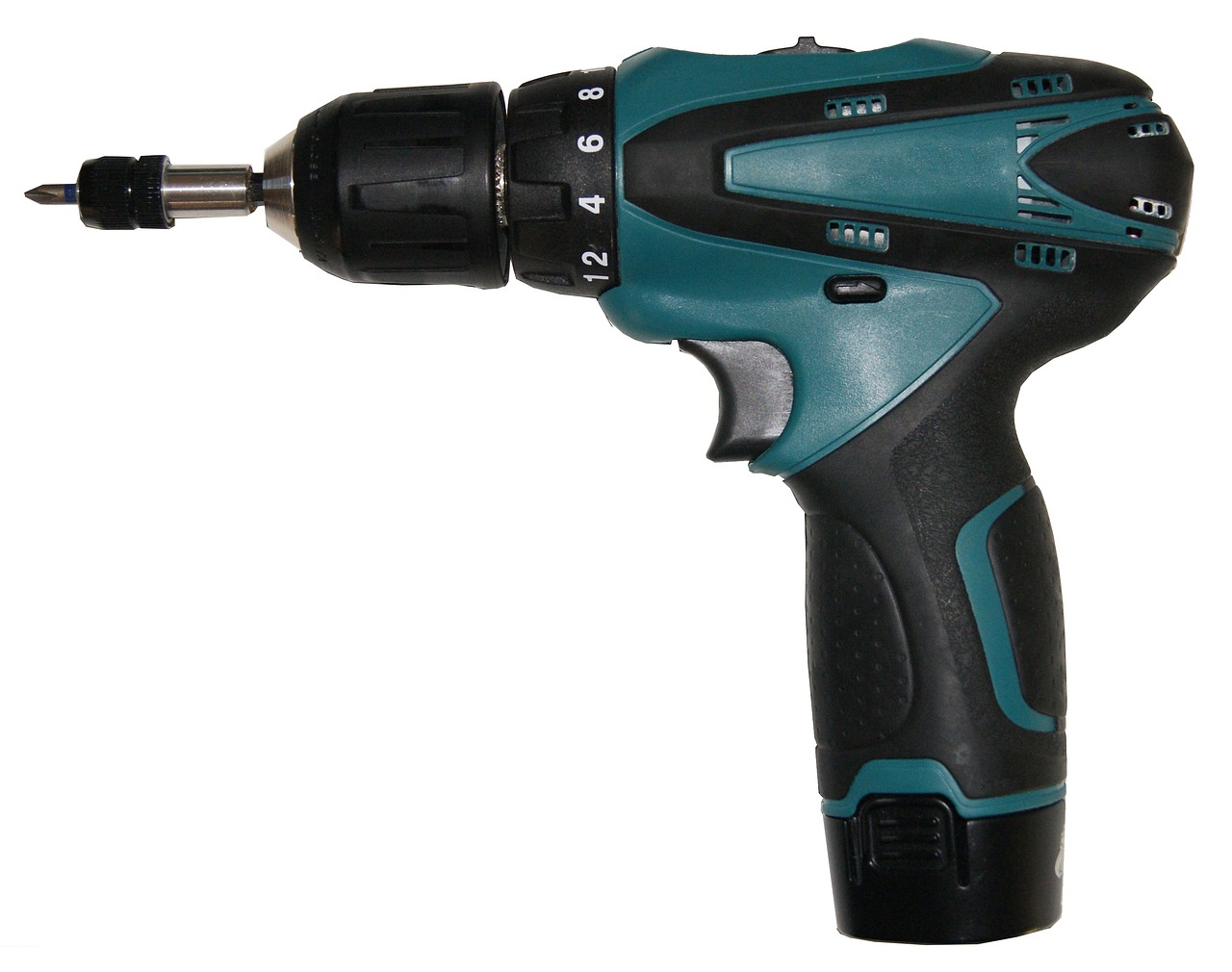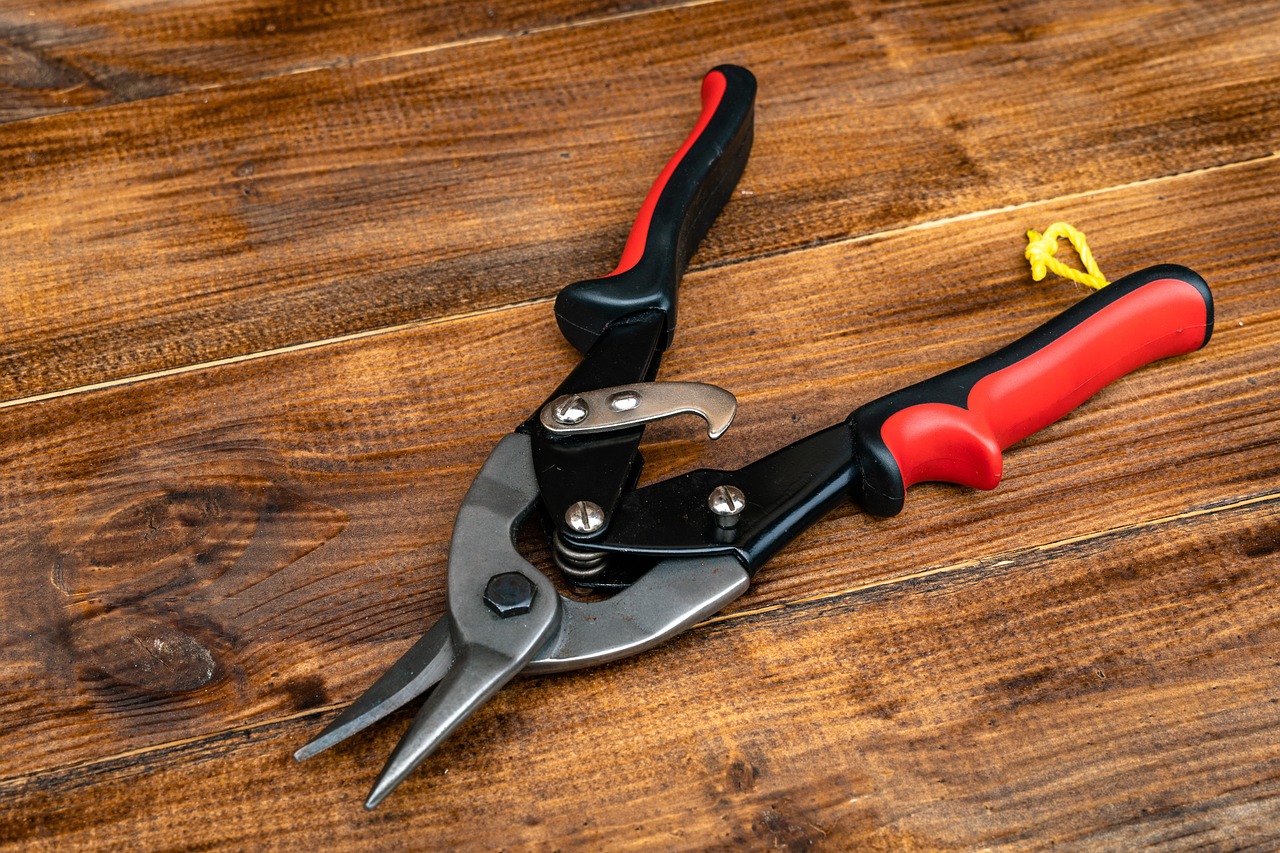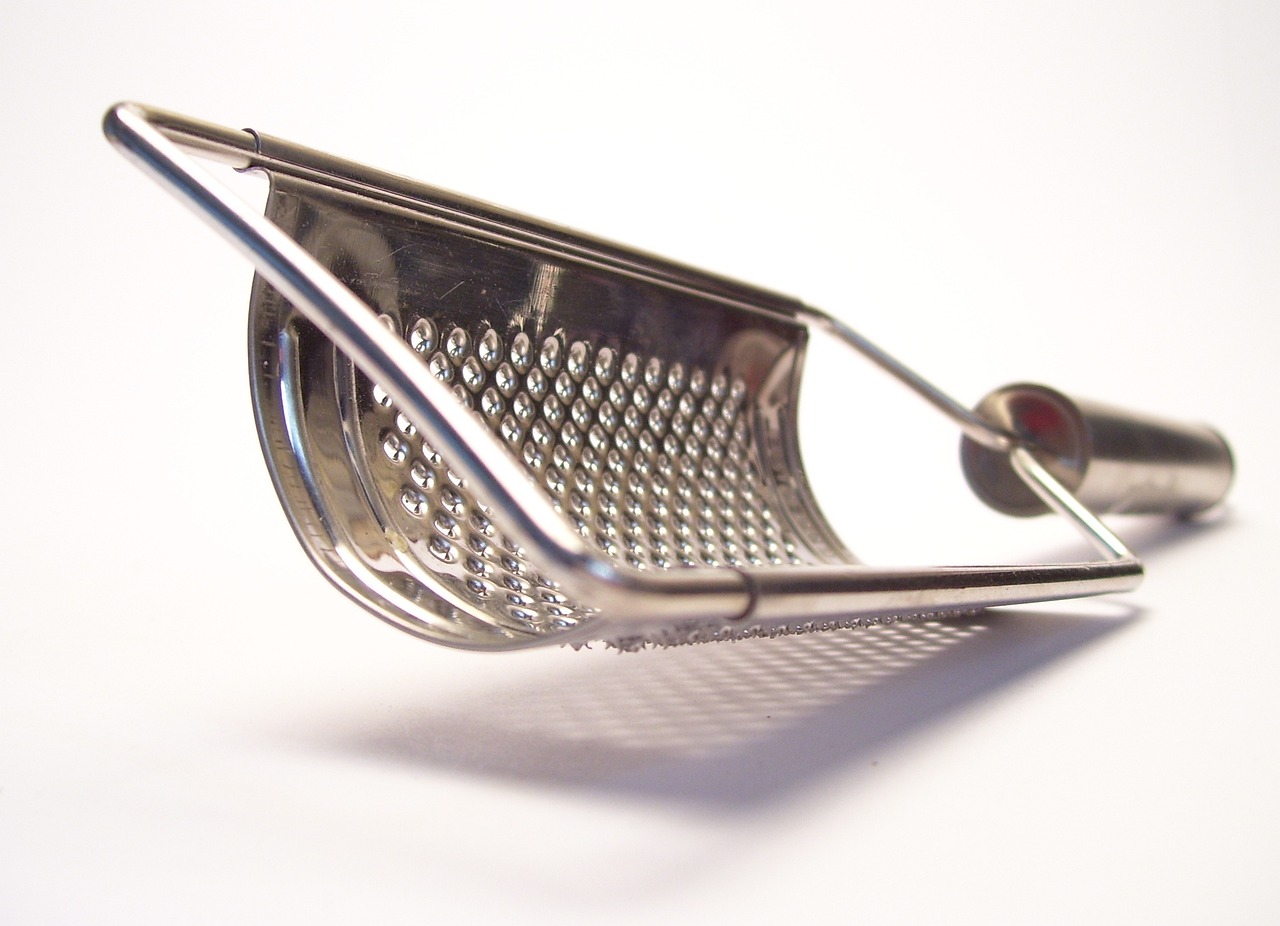Building a Wooden Dream House: Miniature Woodworking
Welcome to the enchanting world of miniature woodworking, where your imagination can take flight and transform into a tangible wooden dream house! Whether you're a seasoned craftsman or just dipping your toes into the art of woodworking, this article will guide you through the exciting journey of creating your very own miniature abode. Picture this: a tiny house complete with intricate details, vibrant colors, and a charm that can only come from the love and care you pour into each piece of wood. It’s not just about building a structure; it’s about crafting a story, a memory, and perhaps even a legacy. So, grab your tools and let’s dive into the fascinating techniques, materials, and tips that will help you bring your dream house to life!
When it comes to miniature woodworking, selecting the appropriate type of wood is absolutely crucial. The choice of wood can affect not only the aesthetics of your project but also its durability and ease of work. Here are some popular wood options you might consider:
| Type of Wood | Characteristics | Best For |
|---|---|---|
| Basswood | Soft, lightweight, easy to carve | Detailed carvings and intricate designs |
| Pine | Affordable, readily available, strong | Structural components and larger pieces |
| Mahogany | Beautiful grain, durable, rich color | Finishing touches and decorative elements |
When choosing your wood, consider factors such as workability, finish, and cost. Each type of wood brings its own unique character to your project, so don’t be afraid to experiment and find what resonates with you!
Now that you’ve picked out your wood, let’s talk about the tools you’ll need. Having the right tools can make your woodworking experience not only smoother but also a lot more enjoyable. Imagine trying to bake a cake without a mixer; it would be a challenge, right? The same goes for woodworking! Here’s a brief overview of what you’ll need:
Hand tools are vital for precision and detail in miniature woodworking. They allow you to have complete control over your cuts and shapes. Here are some must-have hand tools:
- Saws: A small coping saw or a fine-toothed saw is perfect for intricate cuts.
- Chisels: Essential for shaping and detailing your wood.
- Clamps: Keep your pieces secure while you work.
While hand tools are great for detail work, power tools can significantly speed up the woodworking process. They are like the espresso shot in your morning coffee—boosting your efficiency! Some useful power tools include:
- Miniature table saw: Perfect for straight cuts on larger pieces.
- Dremel tool: Ideal for sanding and intricate detailing.
Proper maintenance of your tools ensures their longevity and efficiency. Just like a well-oiled machine, your tools need care to perform at their best. Here are a few tips:
- Keep blades sharp for clean cuts.
- Clean tools after each use to prevent rust.
- Store tools in a dry, safe place to avoid damage.
Precision cutting is a fundamental skill in woodworking. Mastering various cutting techniques will help you achieve clean and accurate cuts for your miniature house. Practice makes perfect, so don’t be discouraged if it takes a few tries to get it right!
Creating a design blueprint is the first step in building your miniature house. Think of it as the map to your treasure! Start by sketching out your ideas and planning dimensions. This will give you a clear vision of what you want to create and help you stay organized throughout the building process.
Adding details can elevate your miniature house's aesthetic to new heights. Consider incorporating intricate elements like windows, doors, and decorative features that reflect your personal style. These details are the icing on the cake, making your project truly unique!
The right finish can enhance the beauty of your wooden house. Explore different coloring and finishing techniques that can bring your miniature project to life. Whether you prefer a natural wood finish or a vibrant paint color, the options are endless!
Q: What is miniature woodworking?
A: Miniature woodworking involves creating small-scale wooden structures, often with intricate details, for display or play.
Q: Do I need special tools for miniature woodworking?
A: While you can use standard woodworking tools, having specialized miniature tools can greatly enhance precision and ease of use.
Q: How long does it take to build a miniature house?
A: The time varies based on complexity, but most projects can take anywhere from a few days to several weeks.

Choosing the Right Wood
When it comes to miniature woodworking, selecting the right type of wood is crucial for achieving the desired aesthetics and structural integrity of your project. The wood you choose can significantly impact the final look and feel of your miniature dream house. Think of it as the foundation of a building; without a solid base, everything else can crumble. So, let’s dive into the various options available and help you make an informed choice!
First off, consider the different types of wood commonly used in miniature woodworking. Here are a few popular choices:
- Basswood: This is a favorite among hobbyists due to its soft texture and ease of cutting. It’s perfect for intricate details and is often used for model making.
- Birch: Known for its strength and durability, birch offers a smooth surface that holds paint and finishes well, making it a great choice for more robust structures.
- Mahogany: If you’re looking for something that screams elegance, mahogany is your go-to. Its rich color and fine grain make it ideal for decorative elements.
- Pine: This is widely available and budget-friendly. While it may not be as fine-grained as other options, it’s perfect for beginners and larger projects.
Now that you have a sense of the types of wood available, how do you choose the best one for your miniature house? Here are some factors to consider:
| Wood Type | Characteristics | Best For |
|---|---|---|
| Basswood | Soft, easy to cut, great for details | Intricate designs |
| Birch | Strong, smooth surface | Robust structures |
| Mahogany | Rich color, fine grain | Decorative elements |
| Pine | Budget-friendly, widely available | Beginner projects |
Choosing the right wood also involves considering the scale of your project. For a miniature house, you want to ensure that the wood is lightweight yet sturdy enough to hold together. Additionally, think about the finishing options you plan to use. Some woods take stains and paints better than others, which can affect your overall design. For instance, if you plan to paint your miniature house, basswood or birch might be your best bets, as they provide a smooth surface for paint adhesion.
Lastly, don’t forget about the sustainability aspect. If you’re environmentally conscious, look for woods that are sourced responsibly or consider using reclaimed wood. Not only does this help the planet, but it can also add a unique character to your miniature house. Remember, the wood you choose is more than just a material; it’s a canvas for your creativity!

Essential Tools for Miniature Woodworking
When diving into the world of miniature woodworking, having the right tools can make all the difference between a frustrating experience and a rewarding one. Think of your tools as the paintbrushes of an artist; they define the quality and precision of your work. Whether you're a seasoned woodworker or a curious beginner, understanding which tools are essential will set you on the path to creating your own wooden dream house.
First and foremost, let’s talk about hand tools. These are indispensable for achieving the level of detail that miniature projects demand. For instance, a fine-toothed saw is perfect for making clean cuts without splintering the wood. Chisels come in various shapes and sizes, allowing for intricate detailing on windows and doors. Don’t forget about clamps; they’re essential for holding pieces together while the glue dries, ensuring your work remains precise.
Now, while hand tools are great for precision, power tools can save you a significant amount of time and effort. Imagine trying to cut through a thick piece of wood with a hand saw—it’s doable, but it’s also exhausting! A mini table saw or a rotary tool can make quick work of cutting and shaping wood. However, safety is paramount; always read the manual and wear proper protective gear when using power tools.
But what good are tools if they aren’t well maintained? Proper tool maintenance is crucial for longevity and performance. Regularly clean your tools after use, oil moving parts, and check for any signs of wear and tear. For example, a dull blade can ruin your cuts and lead to frustration. So, keep a sharpening stone handy and make it a habit to sharpen your blades regularly.
To sum it up, the essential tools for miniature woodworking encompass a mix of hand and power tools, each serving its unique purpose. Here’s a quick overview:
| Tool Type | Examples | Purpose |
|---|---|---|
| Hand Tools | Saws, chisels, clamps | Precision cutting and detailing |
| Power Tools | Mini table saw, rotary tool | Speeding up cutting and shaping |
| Maintenance Tools | Sharpening stone, cleaning supplies | Keeping tools in top condition |
In conclusion, investing in the right tools and taking care of them will not only enhance your miniature woodworking experience but also elevate the quality of your projects. So gather your tools, and let your creativity flow as you embark on the exciting journey of building your wooden dream house!
Q: What is the best type of wood for miniature woodworking?
A: Basswood is often recommended for beginners due to its softness and ease of cutting, while hardwoods like maple and cherry can provide a more durable finish.
Q: Do I need power tools for miniature woodworking?
A: While hand tools are sufficient for many projects, power tools can significantly speed up the process and improve precision, especially for larger pieces.
Q: How can I ensure my cuts are precise?
A: Using a miter box or a cutting guide can help you achieve straight, accurate cuts. Practice makes perfect, so don’t be discouraged if it takes time to master.
Q: What should I do if my tools start to rust?
A: Rust can be removed using a rust eraser or fine steel wool. After cleaning, apply a thin layer of oil to prevent future rusting.

Hand Tools
When it comes to miniature woodworking, having the right hand tools can make all the difference between a frustrating experience and a satisfying project. Think of hand tools as the paintbrushes of a painter; they allow you to express your creativity with precision and detail. For miniature woodworking, you’ll want to have a selection of essential hand tools that cater to the unique needs of working with small pieces of wood. Let's dive into some of the must-have tools that will help you bring your wooden dream house to life!
First off, a good quality craft saw is indispensable. Unlike regular saws, craft saws are designed for intricate cuts and can navigate tight corners with ease. This makes them perfect for cutting out the shapes of your miniature house's walls, roof, and other components. Pair your saw with a chisel to carve out details and create clean edges. A chisel allows you to refine your cuts, making it an essential tool for achieving that stunning finish.
Another critical tool is the clamp. Clamps hold your pieces securely in place while you work, ensuring that your cuts remain accurate and your joints fit together snugly. Imagine trying to assemble a puzzle with pieces that keep slipping away; that’s what working without clamps feels like! You’ll also want a ruler or a measuring tape for precise measurements, as even a tiny mistake can throw off the entire project.
Additionally, a craft knife is perfect for making fine adjustments and intricate cuts. Think of it as your secret weapon for detailing; it can help you create windows, doors, and other features that will make your miniature house stand out. Finally, a file or sanding block will help you smooth out rough edges and give your project that polished look. Remember, the devil is in the details, and a little sanding goes a long way!
In summary, here’s a quick overview of the essential hand tools you should consider for your miniature woodworking project:
| Tool | Purpose |
|---|---|
| Craft Saw | For intricate cuts and shapes |
| Chisel | For refining cuts and adding details |
| Clamp | To hold pieces securely while working |
| Ruler/Measuring Tape | For precise measurements |
| Craft Knife | For fine adjustments and detailing |
| File/Sanding Block | To smooth out rough edges |
With these tools in hand, you’ll be well-equipped to tackle your miniature woodworking projects. Remember, the right tools not only enhance your craftsmanship but also make the entire process more enjoyable. So, gather your tools, let your imagination run wild, and start building your wooden dream house!
Q: What is the best type of wood for miniature woodworking?
A: Basswood and balsa wood are popular choices due to their softness and ease of cutting. They are lightweight and allow for intricate detailing.
Q: Can I use regular saws for miniature woodworking?
A: While you can, it’s recommended to use craft saws specifically designed for intricate work to achieve better precision.
Q: How do I maintain my hand tools?
A: Regularly clean your tools after use and apply a light coat of oil to prevent rust. Keep them stored in a dry place to maintain their longevity.

Power Tools
When diving into the world of miniature woodworking, can be your best friends. They not only save time but also enable you to achieve precision that might be hard to accomplish with hand tools alone. Imagine transforming a block of wood into a stunning miniature dream house in a fraction of the time it would take with just a saw and a chisel. However, it’s essential to choose the right tools for the job to ensure that your creations come out just as you envisioned.
One of the most versatile power tools you'll want to have in your arsenal is a jigsaw. This tool is perfect for making intricate cuts that are often necessary when creating detailed parts of your miniature house, like curved roofs or unique window shapes. Another essential tool is the router, which can help you add decorative edges and grooves to your wood pieces, giving your project that extra flair. Furthermore, a drill is indispensable for making precise holes for hinges or dowels, ensuring everything fits together seamlessly.
As you venture into the realm of power tools, safety should always be your top priority. Always wear protective gear, such as goggles and ear protection, to shield yourself from dust and noise. Additionally, familiarize yourself with the user manuals of each tool to understand their specific functions and safety features. Remember, a well-maintained tool is a safe tool. Make it a habit to clean your tools after each use and check for any wear and tear.
To help you better understand which power tools might be best for your miniature woodworking projects, here’s a quick comparison table:
| Power Tool | Primary Use | Key Features |
|---|---|---|
| Jigsaw | Intricate cutting | Adjustable speed, various blade types |
| Router | Decorative edges and grooves | Variable speed settings, multiple bit options |
| Drill | Making holes | Variable torque settings, multiple bit compatibility |
In conclusion, while hand tools have their charm and are essential for fine details, power tools can significantly enhance your woodworking experience. By integrating both into your toolkit, you’ll be well on your way to crafting a miniature wooden dream house that not only looks fantastic but also showcases your skills as a woodworker. So, gear up, stay safe, and enjoy the process of bringing your creative visions to life!
Q: What is the best power tool for beginners in miniature woodworking?
A: A jigsaw is often recommended for beginners due to its versatility and ease of use. It can handle various cuts and shapes, making it a great starting point.
Q: How can I ensure my power tools last longer?
A: Regular maintenance, including cleaning and proper storage, is crucial. Always follow the manufacturer’s instructions for care and check tools for any damage before use.
Q: Are there any safety tips for using power tools?
A: Yes! Always wear protective gear, keep your workspace clean, and never operate tools when fatigued. Familiarize yourself with each tool's safety features before use.

Tool Maintenance
Maintaining your woodworking tools is just as important as using them. Think of your tools as your trusty sidekicks; if they’re not in good shape, they can’t help you fight the battle against rough cuts and splintered wood. Regular maintenance not only extends the life of your tools but also ensures that you achieve the best results in your miniature woodworking projects. So, how do you keep these essential tools in top condition? Let's dive into some practical tips!
First off, cleaning is crucial. After each session, take a moment to wipe down your tools. Dust, wood shavings, and moisture can accumulate and cause rust or deterioration over time. For hand tools, a simple cloth will do, but for power tools, make sure to follow the manufacturer's instructions for cleaning. A clean tool is a happy tool!
Next, consider sharpening. Dull blades can lead to frustration and poor-quality cuts. Invest in a good sharpening stone or a honing guide to keep your chisels and saw blades sharp. You wouldn’t want to try cutting a cake with a butter knife, right? The same principle applies to woodworking. Regular sharpening can make a world of difference.
Another important aspect is storage. Tools should be stored in a dry place to prevent rusting. Consider using a toolbox or a pegboard to keep everything organized and easily accessible. You might even want to label your storage areas, so you can grab what you need without rummaging through a chaotic mess. Trust me, a well-organized workshop can spark joy and creativity!
Lastly, check for wear and tear regularly. Inspect your tools for any signs of damage, such as cracks or loose handles. If you notice any issues, address them immediately. A small crack can lead to a big problem down the road. It’s better to fix a small issue now than to deal with a major repair (or worse, an injury) later.
To summarize, here’s a quick table of maintenance tips:
| Maintenance Task | Frequency | Purpose |
|---|---|---|
| Cleaning | After each use | Prevent rust and buildup |
| Sharpening | As needed | Maintain cutting efficiency |
| Storage | Always | Protect from damage |
| Inspection | Monthly | Identify and fix issues |
By incorporating these simple yet effective maintenance practices into your routine, you’ll not only enhance the performance of your tools but also elevate the quality of your miniature woodworking projects. Just like a chef needs sharp knives, you need well-maintained tools to create your wooden dream house. Happy woodworking!
- How often should I clean my woodworking tools? It's best to clean them after each use to prevent buildup and rust.
- What’s the best way to sharpen my chisels? A sharpening stone or honing guide works well for maintaining a sharp edge.
- Can I store my tools outside? No, it's advisable to keep them in a dry, indoor environment to avoid rust and damage.
- How can I tell if my tool is damaged? Regular inspections will help; look for cracks, loose parts, or excessive wear.

Techniques for Precision Cutting
When it comes to miniature woodworking, precision cutting is not just a skill; it's an art form. Imagine crafting a tiny wooden house where every piece fits together like a puzzle. Achieving this level of accuracy requires a combination of the right techniques and tools. One of the most fundamental techniques is using a sharp, fine-toothed saw for intricate cuts. A coping saw, for example, can maneuver around curves and corners with ease, making it an essential tool for any miniature woodworker.
Another technique to master is the use of a miter box. This tool helps you make perfect angled cuts, which are crucial when constructing roofs or frames. By securing your wood in the miter box, you can achieve clean, precise angles every time. But don’t stop there! Using a combination square can also aid in marking your cuts accurately. This tool ensures that your lines are straight and true, providing a guide for your saw. Remember, a well-marked piece of wood is half the battle won.
Moreover, scoring your cuts before fully cutting through the wood can significantly enhance precision. By lightly cutting along your marked line with a utility knife, you create a groove that helps guide your saw blade. This is especially useful for delicate cuts that require a steady hand and a keen eye. The groove acts like a track, reducing the chances of the saw wandering off course.
In addition to these techniques, it's essential to maintain a steady hand and a calm mind. Think of yourself as a sculptor, chiseling away at a block of marble. Each cut should be deliberate and thoughtful. If you feel rushed or anxious, take a moment to breathe and refocus. After all, woodworking is as much about the journey as it is about the final product.
Lastly, don’t underestimate the importance of practice. Just like any other skill, precision cutting improves with time and experience. Start with simple projects to build your confidence, and gradually work your way up to more complex designs. You might even consider keeping a practice board handy, where you can test your cuts and refine your techniques without the pressure of ruining your main project.
By incorporating these techniques into your miniature woodworking routine, you'll find that precision cutting becomes second nature. Each cut will not only enhance the aesthetic of your wooden dream house but also boost your confidence as a skilled craftsman. So grab your tools, take a deep breath, and let your creativity flow!
- What type of saw is best for precision cutting? A coping saw or a fine-toothed saw is ideal for intricate cuts.
- How can I ensure my cuts are straight? Using a combination square to mark your lines and a miter box for angled cuts can help.
- Is scoring necessary for all cuts? While not necessary for every cut, scoring can improve accuracy for delicate or intricate designs.
- How can I practice my cutting skills? Start with scrap wood to practice different techniques before working on your main project.

Designing Your Dream House
Creating a design blueprint is the first step in building your miniature house. It’s like laying the foundation of a grand castle in your imagination! Before you dive into cutting and assembling, take a moment to sketch out your ideas. This not only organizes your thoughts but also helps you visualize how your dream house will come together. Think about the style you want—are you aiming for a cozy cottage, a sleek modern home, or perhaps a whimsical fairy tale abode? The possibilities are as endless as your creativity!
Start by grabbing a piece of graph paper or using a digital design tool. Sketching on graph paper can help you maintain proportions and dimensions accurately. It’s important to consider the scale of your miniature house. For instance, if you’re using a 1:12 scale (one inch in the model equals twelve inches in real life), make sure your measurements reflect that. This attention to detail will pay off when you start cutting your wood pieces!
Next, think about the layout of your house. How many rooms do you want? Will there be a porch, a balcony, or maybe even a garden? Consider the flow of the house. You might want to draw a simple floor plan that includes the placement of walls, doors, and windows. A well-thought-out layout can make your miniature house not only aesthetically pleasing but also functional. It's like choreographing a dance where every step counts!
Once you have your basic layout, it’s time to incorporate details that will truly make your miniature house shine. Adding elements like windows, doors, and decorative trim can elevate its overall appearance. Think of these details as the jewelry that enhances an outfit; they can bring your design to life! For windows, consider using materials like clear plastic or glass to create a realistic look. You can even add curtains or shutters for that extra touch of charm.
Now, let’s talk about color and finishing options. The right finish can enhance the beauty of your wooden house, making it look polished and professional. You can choose from a variety of stains, paints, and sealants. A light stain can highlight the natural grain of the wood, while a bold paint color can give your house a fun and vibrant personality. Remember, the finish is not just about looks; it also protects your work from wear and tear. So, choose wisely!
As you finalize your design, consider creating a materials list. This list will guide you in gathering everything you need before you start building. Having all your materials ready will save you time and keep you focused during the construction phase. Plus, it’s incredibly satisfying to check items off your list as you gather supplies!
In conclusion, designing your dream house is an exciting journey that combines creativity, planning, and a bit of technical know-how. By taking the time to sketch your ideas, think about the layout, and incorporate intricate details, you’ll set the stage for a successful miniature woodworking project. So grab your pencil, unleash your imagination, and let’s get started on building that wooden dream house!
- What materials do I need to start building my miniature house? You’ll need wood, glue, paint or stain, and tools like saws and clamps. A detailed materials list can help you gather everything you need.
- Can I use recycled materials for my project? Absolutely! Recycled materials can add character and uniqueness to your miniature house.
- How long does it take to build a miniature house? The time varies based on the complexity of your design and your skill level. It could take anywhere from a few days to several weeks.
- Do I need prior woodworking experience? While some experience can be helpful, beginners can certainly start with simple projects and gradually build their skills.

Incorporating Details
When it comes to building your miniature wooden dream house, the magic often lies in the details. Just like a beautifully crafted painting, it’s the intricate brushstrokes that bring the artwork to life, and the same principle applies here. Incorporating details into your miniature house not only enhances its aesthetic appeal but also showcases your craftsmanship and creativity. So, how do you go about adding these captivating features to your project?
First off, consider the architectural elements that define your dream house. Think about the style you’re aiming for—whether it’s a quaint cottage, a modern villa, or a rustic cabin. Each style has unique characteristics that can guide your detailing process. For instance, a Victorian house might benefit from ornate trim and decorative gables, while a minimalist design could focus on clean lines and simplicity.
Next, let’s talk about windows and doors. These elements are not just functional; they can also serve as focal points in your design. You can create windows with intricate frames, add shutters, or even use colored acrylic sheets to mimic glass. Doors can be embellished with tiny doorknobs, hinges, and even a small welcome mat at the base. These little touches can transform a plain structure into a charming abode.
Moreover, consider adding landscaping details around your miniature house. This could include tiny flower beds, pathways made from pebbles, or even miniature trees and shrubs. You can craft these elements from various materials such as foam, paper, or even natural materials like moss. By doing so, you’ll create a more immersive environment that invites viewers to explore every nook and cranny of your creation.
Another essential aspect is the roofing details. A well-crafted roof can dramatically change the look of your house. You might choose to use shingles made from thin wood slices, or even paint the roof to give it a weathered look. Adding a chimney or a small rooftop garden can also infuse character into your design. These elements not only catch the eye but also tell a story about the house’s history.
Finally, don’t forget about the interior details. If your miniature house allows for a glimpse inside, consider adding furniture, wall decorations, and even tiny accessories like books or kitchenware. Each item can be crafted from scrap materials or purchased from miniature supply stores, making your project even more personalized and unique. Remember, it’s the details that will invite your audience to imagine the lives of those who might inhabit your dream house.
In summary, incorporating details into your miniature woodworking project is an essential step in bringing your vision to life. By focusing on architectural elements, windows and doors, landscaping, roofing, and interior design, you can create a stunning representation of your dream house that truly reflects your artistic flair. So, roll up your sleeves and let your creativity shine!
- What materials are best for adding details? You can use a variety of materials such as balsa wood, foam, paper, and even natural elements like twigs and moss to add details to your miniature house.
- How do I make tiny furniture for my miniature house? Tiny furniture can be crafted from scrap wood, cardboard, or even purchased from specialized miniature stores. There are also many DIY tutorials available online.
- Can I paint my miniature house? Absolutely! Painting can add color and depth to your project. Use acrylic paints for the best results, and don’t forget to seal your paint with a clear finish to protect it.

Color and Finishing Options
When it comes to crafting your miniature wooden dream house, play a pivotal role in transforming your project from a simple structure into a visual masterpiece. The right finish not only enhances the aesthetic appeal but also protects the wood from wear and tear. Think of it as the icing on the cake—it can make all the difference! So, what are the best options to consider?
First off, you have a variety of staining options to choose from. Stains come in a plethora of colors, allowing you to achieve anything from a natural wood look to vibrant hues. Here’s a quick rundown of popular stain types:
| Stain Type | Description | Best For |
|---|---|---|
| Oil-Based Stains | Offers deep penetration and enhances the wood grain. | General use on hardwoods. |
| Water-Based Stains | Quick drying with less odor; easier cleanup. | Indoor projects and quick finishes. |
| Gel Stains | Thick consistency, perfect for vertical surfaces. | Control over color application. |
Once you’ve decided on a stain, the next step is to consider the finish. This is crucial as it protects your miniature house from scratches, moisture, and dust. Here are some popular finishing options:
- Polyurethane: A durable finish available in both oil and water-based formulas. It’s perfect for high-traffic areas and provides excellent protection.
- Satin Finish: Offers a soft sheen that enhances the wood’s natural beauty without being too shiny. Ideal for a more traditional look.
- Varnish: Provides a hard, protective layer that can withstand the test of time. Great for outdoor projects.
But wait, there’s more! You can also experiment with paint if you’re feeling adventurous. Painting allows for unlimited creativity and customization. Whether you want a classic white picket fence look or a vibrant blue exterior, paint can help you achieve your vision. Just remember to use a primer first to ensure the paint adheres well and lasts longer.
Finally, don’t underestimate the power of decorative finishes. Techniques like distressing, glazing, or even adding a touch of metallic paint can give your miniature house that extra flair. Think of it as adding a unique personality to your creation—something that tells a story and makes it truly yours.
In conclusion, the color and finishing options you choose for your miniature woodworking project can breathe life into your wooden dream house. Whether you go for a natural stain, a glossy finish, or a bold paint color, make sure it reflects your personal style and vision. Happy woodworking!
Q: What is the best type of wood for miniature projects?
A: Basswood is often recommended due to its fine grain and ease of cutting, but other softwoods like pine and cedar can also work well.
Q: How do I apply wood stain properly?
A: Start by sanding the wood to a smooth finish, then apply the stain with a brush or cloth, wiping off excess after a few minutes to achieve your desired color.
Q: Can I use acrylic paint on wood?
A: Yes, acrylic paint works well on wood, but it's best to use a primer first for better adhesion.
Q: How do I maintain the finish on my miniature house?
A: Regular dusting and avoiding exposure to moisture will help maintain the finish. If it starts to wear, consider applying a fresh coat of finish as needed.
Frequently Asked Questions
- What type of wood is best for miniature woodworking?
Choosing the right wood is essential for your project. Popular options include basswood for its softness and ease of cutting, birch for its durability, and pine for its affordability. Each type has its unique characteristics, so consider what fits your vision best!
- What essential tools do I need for building a miniature wooden house?
To get started, you'll need some basic hand tools like saws, chisels, and clamps. If you're ready to take it up a notch, power tools like jigsaws and drills can make the process much quicker. Just remember, the right tools can make all the difference!
- How can I ensure precision cutting in my woodworking?
Precision is key! Use a sharp blade, measure twice, and cut once. Techniques like marking your cuts clearly and using a miter box can help you achieve those clean lines you’re aiming for. Practice makes perfect, so don’t be discouraged if it takes a few tries!
- What are some tips for designing my miniature dream house?
Start with a simple sketch of your ideas! Consider the dimensions and how you want each room to flow. Incorporating details like windows, doors, and other decorative elements can really bring your design to life. Remember, it’s your dream house, so let your creativity shine!
- How do I finish my miniature house for the best appearance?
The right finish can make your miniature house pop! You can choose from paints, stains, or varnishes to enhance the wood's natural beauty. Test different finishes on scrap pieces to see what you like best before applying it to your masterpiece!



















